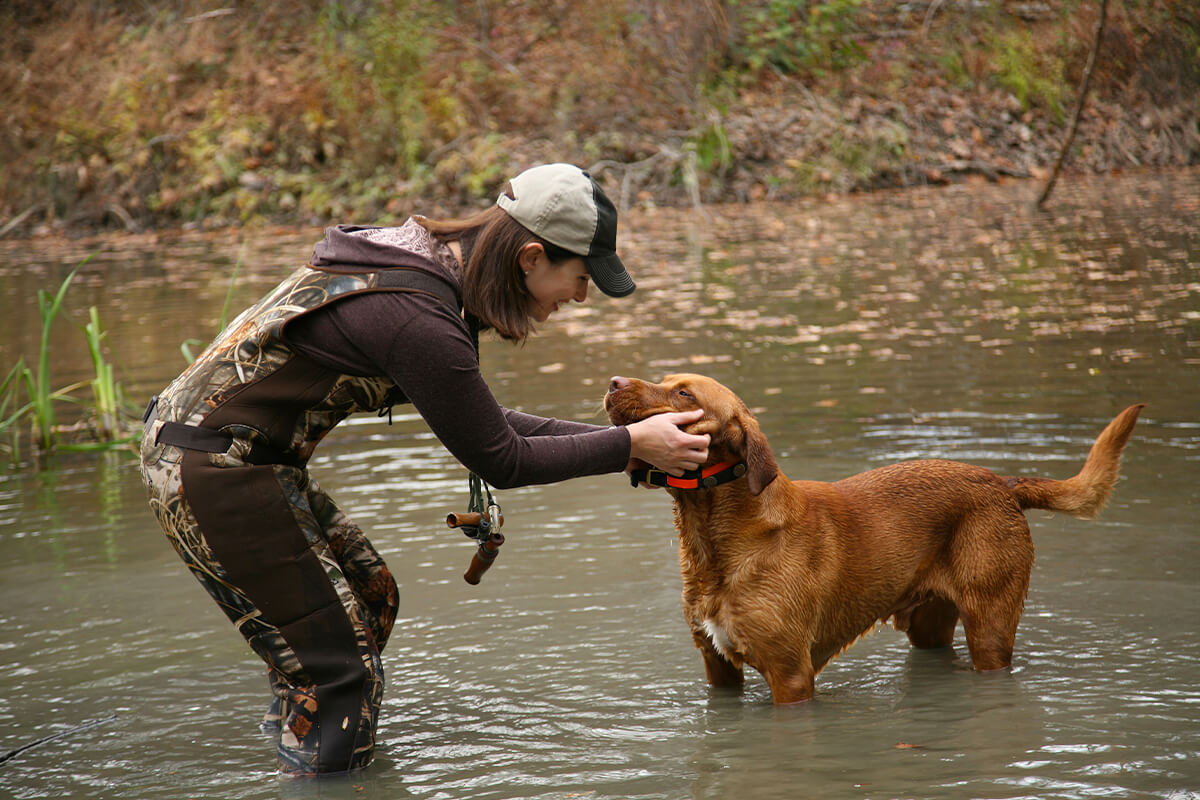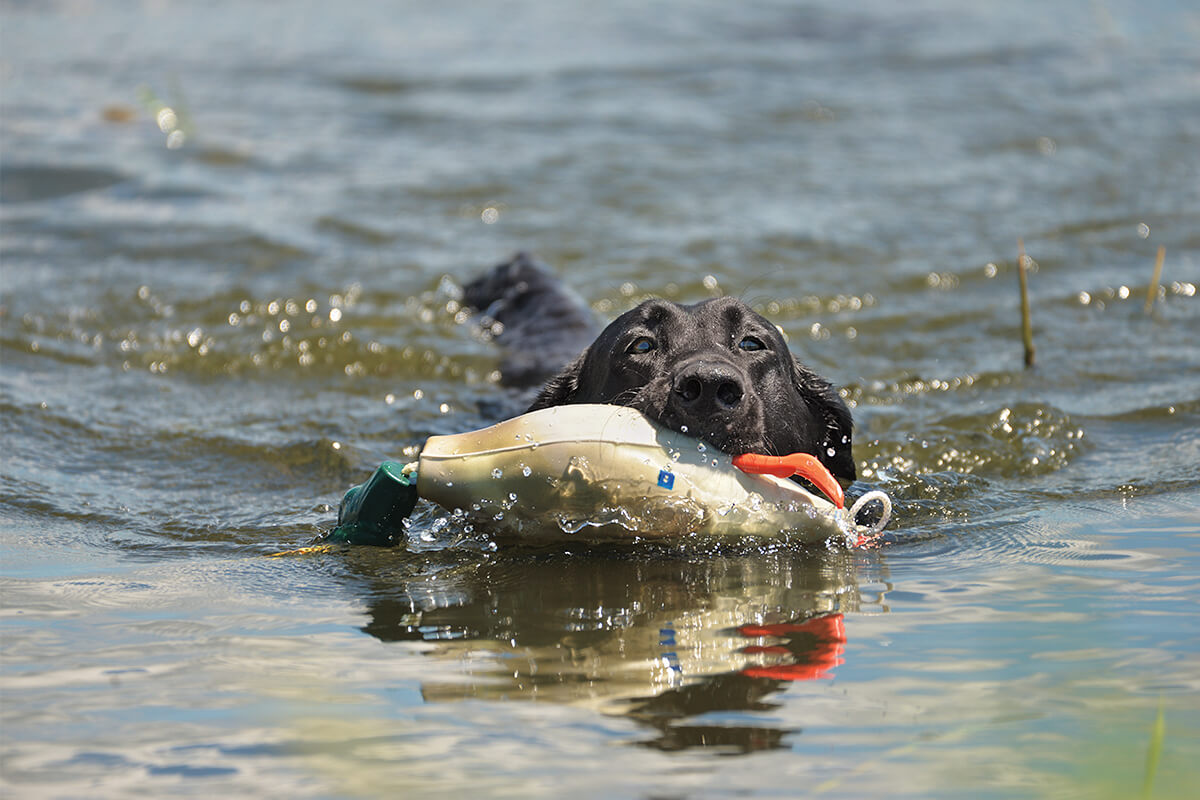
Stopping training at any point is a major mistake so the best way to avoid a disruption is to continue training during and between hunts. (Photo By: Suzi Nelson/Shutterstock.com)
Anyone who has ever tried to diet or get into an exercise regimen knows that there are moments in life that disrupt our best-laid plans. Maybe it’s an event like a good friend’s wedding or a weekend at the cabin for a mini-vacation that throws our plans to eat right, or run a few daily miles, right out the window.
The same rules apply for training dogs, and there is no more disruptive event than opening day of duck season and each subsequent hunt. While we train all summer long to fine-tune our retrievers on double blinds, steadiness, and all of the stuff that makes it so special to hunt with them, we often put training totally on the back burner when we can actually shoot some ducks. This is a bad idea.
For starters, the simplest way to explain this is that our dogs are never finished. Stopping training at any point is a mistake, but this can become really evident when you hit the brakes for the duration of the season. Not only does this allow our dogs to slip, it provides a lot of opportunities for them to develop extra, bad habits around hunting.
The best way to avoid this is to keep training, both during hunts and the days in-between.
Hunt Training
I’ve written many times about how big an advocate I am for bring a training dummy along on all hunts. This can be a boredom breaker for an older dog, but is really important for younger retrievers. The last thing you want is to look at your one-year-old Lab and see him snoozing on the floor of your blind. You want that dog engaged, and one way to do it is to break up the monotony of a slow hunt by working some retrieving drills.

You can also, provided you have the right conditions, do some steadiness work with actual ducks. If I’m hunting a calm day and the ducks aren’t likely to drift off when I knock them down, I’ll make my dogs wait to retrieve them. This is a good way to further convince them that just because a duck hits the water, it doesn’t mean they get to immediately go.
When this scenario happens, I’ll make my retriever wait an age-appropriate amount of time. For a young dog, that might be 20 or 30 seconds. When it comes to a seasoned retriever, it might be as long as 10 or 15 minutes. The key, of course, is to know your dog and to be absolutely confident you’re dealing with a dead duck that isn’t going to get away.
You can also test a dog’s steadiness by standing up and firing a shot when there are no ducks around. Now, you should inform your hunting partners that this is your plan, for obvious reasons. You should also pay attention to your dog, because this is a great test of steadiness and a lot of dogs—even old dogs—fail. Oftentimes, you don’t have to pull the trigger to achieve this. Just standing up abruptly and aiming will often get a dog to start to break. This is a great time to issue a correction and enforce steadiness where it matters most. Keep in mind that this is a great option for field hunters, as well.
The Hours Between
There are two important distinctions to make when you’re talking about training on the days, or hours, between hunts. The first is, what’s the goal? If you’re actually trying to help a dog develop skills, that should be the plan. If you’re just trying to take the edge off, which is a good idea with young dogs, then do that.
Retrievers in the latter category often just need to burn off some steam before, or between hunts. There is nothing natural about asking a young dog to go into a really exciting environment and then sit stock-still for hours, hoping that there will be a few chances to do the thing he loves the most.
This is a big ask, and is a big reason why a lot of hunters lose their cool during mornings in the blind. If you have any opportunity to do so, manage your dog’s exercise level in relation to the amount of time you’ll spend hunting. This might just mean a nice, long walk between a morning and an afternoon hunt, or it might mean tossing a dummy during the hunt like I mentioned earlier.

If you’re looking to develop your dog’s skills in the time between hunts, a great strategy is to take a duck from the morning’s hunt and run some trailing drills. While this is a core upland skill, trailing isn’t something that is taught as frequently to duck dogs. But it should be.
The ability to work out a scent trail on a wounded bird is important, so what I like to do is take a rope or a leash and tie it to the duck. Then I’ll drag it through the grass, making it as simple or as complex as my dog needs it to be (but not so complex he won’t be able to figure it out). This is a great drill to run with a training tool (a dead duck) that you might not have access to for much of the year. It teaches retrievers that sometimes the visual marks or hand signals won’t be enough to easily get him to his prize, and that he’ll have to follow up a wounded greenhead through the dry ground at the edge of the swamp.
The key to successful in-season training comes in two forms. The first is the commitment to keep working during hunts, and during the time between. The other is understanding what you’re willing to accept behavior-wise during a hunt, and what you’re willing to do to address it. If you see a problem, but are more interested in working toward your limit, then that’s okay (just be honest about it). If you would rather stop the hunt to shore up something with your retriever, do that. Know this about yourself, your dogs, and your potential hunting partners, so everyone is on the same page.
And always, keep training. Because no dog is truly finished and hunting season is a great time to realize that—and do something about it.









